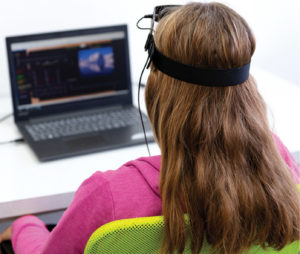 Our brains are designed to adapt. As humans, we are not stationary…we are ever changing, adjusting, evolving, learning and growing. But what if our brain doesn’t adjust? What if we get stuck and can’t adapt? Or what if our routine, norms, society, and emotions are changing too fast for our brain?
Our brains are designed to adapt. As humans, we are not stationary…we are ever changing, adjusting, evolving, learning and growing. But what if our brain doesn’t adjust? What if we get stuck and can’t adapt? Or what if our routine, norms, society, and emotions are changing too fast for our brain?
A global pandemic by definition, is global. You are not alone, the entire world is responding to the same thing you are. And even though you are not alone; social distancing, quarantine and “safer at home” orders are making us feel extremely isolated.
Even if we feel like we can behaviorally adjust to the changes in the world right now, to get your brain “on board” with that can be a completely different story.
When does my brain have to adjust?
Our brain adjusts constantly to new situations, life changes, and society shifts. Your brain has to adjust to positive and negative life events: moving, having a baby, marriage, divorce, beginning relationships/friendships and ending relationships/friendships, new jobs, leaving old jobs, recessions, boosts in income and drops in income, and even something as simple as the change of seasons or a full moon can cause our brains to make a shift. In the current situation, we are being required to make several shifts at once, with some individuals having more life changes than others. Everyone’s brain, regardless of age, socio-economic status, or risk factors is being asked to shift right now. The uniqueness of this pandemic is that the impact on our social, economic and psychological well-being is intense, complicated, and prevalent. You may be experiencing some or all of these:
1. Social distancing from friends/family
2. Isolation to home, not able to travel or maintain a routine
3. Economic/financial stress
4. Unemployment or at risk of losing small business (if not so already)
5. Worry/Fear of getting sick regardless of risk factors
6. Being sick and faced with the restricted treatment and access to assistance/ isolation and stigma
7. Education concerns, meeting graduation requirements, being able to resume education or programs, uncertainty about future.
8. Losing loved ones to COVID-19 or other factors.
9. Not being able to celebrate with friends and family life events such as marriage, graduation, and the passing of a loved one.
The ripple effect of this pandemic is still being felt and new consequences are still being discovered.
What does it look like if my brain isn’t adjusting?
We usually give our brains a chance to adjust to change and eventually adapt a “new normal”. However, so far what we are seeing with the current pandemic situation is that most of our brains have endured a significantly prolonged amount of stress. The changes that our brains need to “adjust” to are not known fully. The stress that is caused by this is unmeasured. We are in uncharted waters here and none of us can fully predict nor have a reference point for the future outcome. Therefore our brains remain in a state of dysregulation regardless of our behavioral adaptation. Although we all try to be in control in order to help our brain adjust, that need for control over your life, your brain and this situation looks different in different people. We are all struggling with the same issue and our brains are trying to achieve the same goal but control behaviors vary but themes can look like:
1. Completely complying with rules, regulations and guidelines even though they are continuing to develop and evolve.
2. Refusing to comply with rules, regulations or guidelines with denial of the situation.
3. Believing in conspiracy theories or a disbelief in research, facts, or data.
4. Over-compensating by complete isolation.
5. A mix of all of the above that can shift and change as we process, grasp and try to get control of the situation.
Regardless of how you try to behaviorally control the situation, your brain may still experience:
1. Stress
2. Anxiety
3. Depression
4. Focus/concentration issues
5. Memory issues
6. Worrying
7. Fear/Panic
8. Sleep problems
9. Relationship strain
10. Increased inflammation/ headaches/ pain
11. Increase in previously treated symptoms
What does it look like if my child’s brain isn’t adjusting?
We believe that children are more resilient and can handle things better because they may not fully understand the scope or don’t have the magnitude of responsibilities that adults have to juggle and adjust to. And yes, this is somewhat true. But kids are unique in that their level of awareness and understanding does change as their brains change. A young child is going to struggle with understanding why he can’t resume his normal routine of going to the park, or playing with friends. This child responds with frustration, confusion, and feelings of being out of control. Where an older child has somewhat of an understanding that this is a serious issue that may affect them or their parents and responds with worry, fear, or over attachment. Parents may see all of these or more happening with their children. Special needs children that are comforted by routines and rituals, can find the current climate to be very unsettling.
Regardless of age, these situations, symptoms, and behaviors are signs of our brain’s attempt to adjust. If symptoms do not resolve with a return to modified activities, it may mean that even though you have processed, rationalized, and educated yourself about returning to a balanced and peaceful life, your brain is continuing to work on adjusting.
What can I do to help my brain adjust?
Neurofeedback can help. Neurofeedback can not only help reduce the symptoms specific to you, but it can “retrain” the neural patterns in the brain so that “adjusting” is better managed or controlled throughout your life. Through Neuroplasticity, Neurofeedback becomes a permanent correction of the anxiety patterns in the brain.
What is Neurofeedback?
Neurofeedback, also known as EEG biofeedback, has been studied and practiced since the late 60’s. It is exercise for your brain; allowing you to see the frequencies produced by different parts of your brain in real-time and then through visual and auditory feedback, teaches the brain to better regulate itself. Neurofeedback can be used to help detect, stimulate, and/or inhibit activity in the brain safely and without medication. It can help restore a wider “range of motion” in brain states, much like physical therapy does for the body.
While the client sits comfortably watching a movie or pictures appear on the screen (a calm and focused state), the EEG equipment measures the frequency or speed at which electrical activity moves in the areas where electrodes have been placed. This information is sent to the therapist’s computer. The therapist is then able to determine what frequencies are out of balance. For example, when the EEG shows that you are making too many “slow” or “sleepy” waves (delta/theta) or too many “fast” waves (high beta), the therapist adjusts a reward band to encourage more balanced activity. This encouragement or “reward” happens through an auditory reinforcement of “beeps” and sometimes through visual reinforcement of changes on the screen.
What types of conditions does neurofeedback help?
Symptoms of these conditions, among others, can improve through neurofeedback training:
. Anxiety
. ADD/ADHD
. Seizure disorders
. Migraines/headaches
. Cognitive decline
. Rages/mood swings
. Autism/Asperger’s
. Sleep disorders
. Sensory processing disorder
. Auditory/visual processing
. Traumatic brain injuries
. Peak performance
. Attention/focus/concentration
. Learning disabilities
. Depression
. Bipolar disorder
. Chronic pain/Fibromyalgia
. Stroke
. Oppositional defiant disorder
. Reactive attachment disorder
. Obsessive compulsive disorder
What is aQEEG (Quantitative EEG) or brain map?
The QEEG is a quantitative EEG. It’s also called a brain map and does just that…it gives us a map of what is going on with the entire brain at one time. We attach electrodes to the whole head, 19 spots, and then record the brain waves with eyes open for 5 minutes and with eyes closed for 10 minutes. This recording is then sent to an independent specialist be read and analyzed. They are able to not only give us a summary of significant findings but the report also shows the results of analyzing the data several different ways. The brain activity is not only compared spot by spot over the entire head, but we can also look at connections, symmetry, how different parts are communicating and all of this data is compared to a database of peers (same sex, handedness and age). It can help us see what areas need to be addressed more efficiently than just training spot by spot.
We don’t always need this data to make improvements in symptoms but we do recommend it in certain situations. A QEEG can also be helpful information when diagnosing and/or trying to decide the best medication/supplement recommendations.
Is there enough research?
Neurofeedback has been researched since the 60’s. Here are some resources for research. We have several journal articles, studies and books in our office for you to enjoy, however because of the amount of information out there, we cannot possibly have everything. Here are a few resources.
Look up the work of:
Dr. Joe Kamiya and Dr. Barry Sterman (Credited for earliest development of Neurofeedback).
Look for specific researched conditions:
https://www.eeginfo.com
https://www.isnr.org
Print Resources:
Journal of Neurotherapy
Neuroregulation
Applied Psychophysiology and Biofeedback
A Symphony in the Brain: The Evolution of the New Brain Wave Biofeedback (Curtain Up) Paperback – 31 May 2001 by Jim Robbins.
Healing Young Brains: The Neurofeedback Solution Paperback – 15 May 2009 by Robert W. Hill, Eduardo Castro.
How do I get started?
Getting started is easy, just give us a call. The Brain and Wellness Center staff will answer all of your questions, and help you get scheduled. If you are wondering what services are best for you? We can help determine that at the time of the intake or in a telephone consultation.
Call, email or message us today!
Brain and Wellness Center, 7301 W. Palmetto Park Rd., Suite 102A, Boca Raton, FL 33433.
(561) 206-2706, e-mail us at info@bocabraincenter.com,
or text us at (561) 206-2706 or visit our website at www.BocaBrainCenter.com.
 South Florida Health and Wellness Magazine Health and Wellness Articles
South Florida Health and Wellness Magazine Health and Wellness Articles




